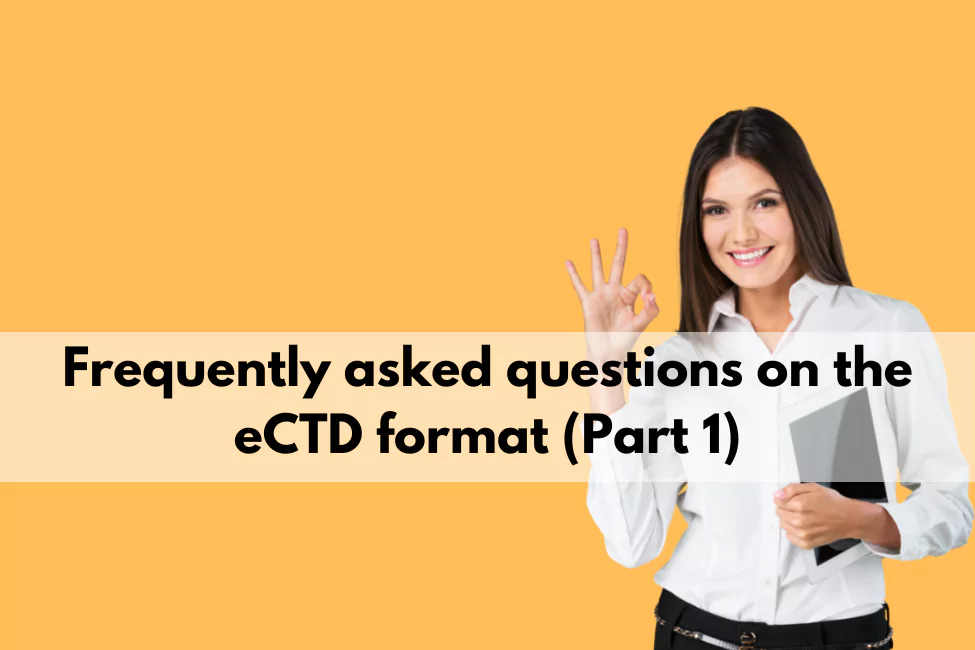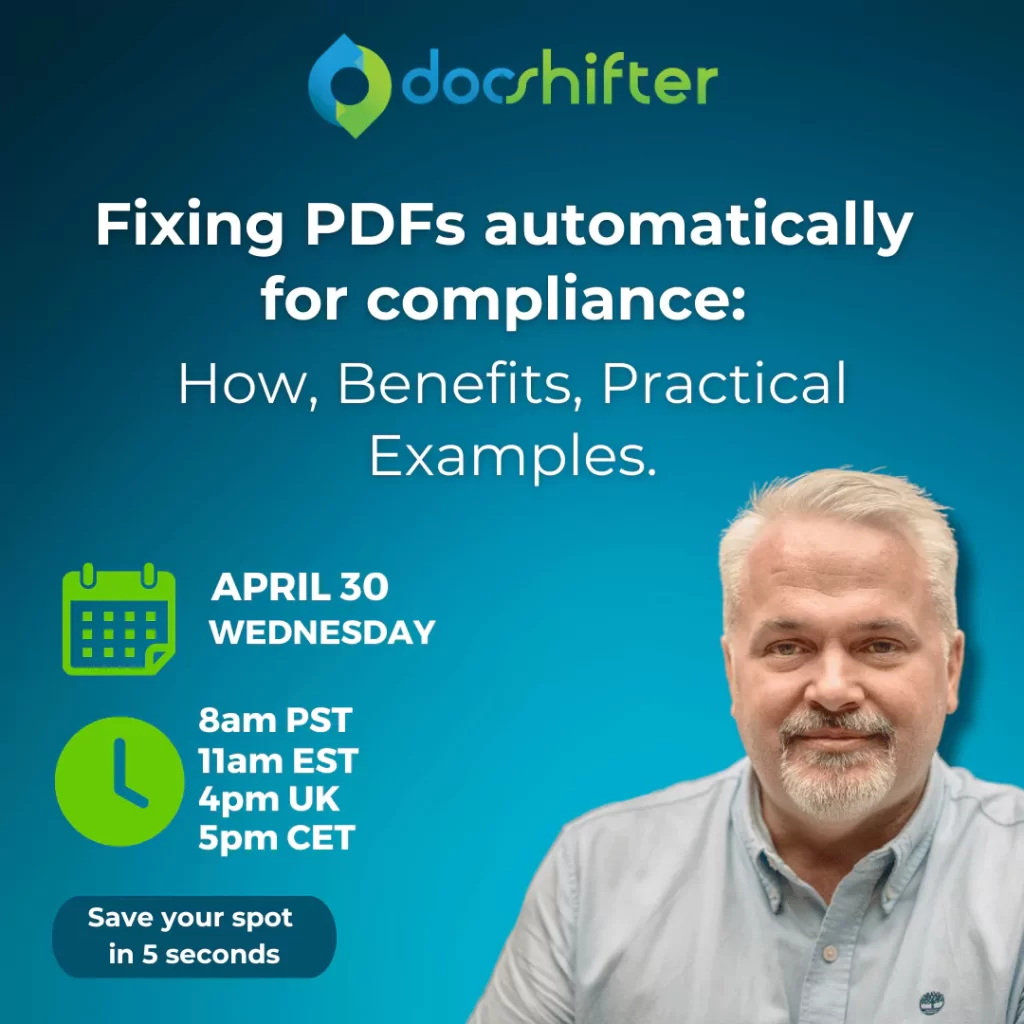
Frequently asked questions on the eCTD submission format (Part 1)
-
By Othmane Achir
- 5 minutes read
This article answers the most frequently asked questions on the electronic common technical document submission format.
A regulatory submission for a Healthcare or Life Sciences product includes all sorts of documentation and information that is submitted to a regulatory agency for:
- review
- notification
- or in response to a request for additional information
What are the types of formats of regulatory submissions?
- Paper submissions
- Non-eCTD electronic submissions (NEES)
- Electronic submissions with eCTD (electronic common technical document)
Types of regulatory submissions
- Clinical trial applications
- Requests for protocol assistance
- Post-approval studies or commitments
- Requests for orphan drug or fast-track designations
- Licensing applications for drugs, biologics and devices
- Responses to agency questions that arise during review
- Amendment/variation applications or notification submissions
What is the CTD?
The Common Technical Document (CTD) is an internationally agreed format for the preparation of applications for the registration of new medicines. These drugs are designed to be used across Europe, Japan and the United States and must be submitted to the regional regulatory authorities.
Who developed the CTD?
The Common Technical Document (CTD), was developed by the European Medicines Agency (EMA, Europe), the Food and Drug Administration (FDA, US) and the Ministry of Health, Labour and Welfare (Japan). The CTD is maintained by the International Conference on Harmonisation of Technical Requirements for Registration of Pharmaceuticals for Human Use (ICH).
What is the eCTD format?
The eCTD is defined as the electronic transfer of regulatory information from industry to agency in a common format, while at the same time taking into consideration the facilitation of the creation, review, lifecycle management and archival of the electronic submission.
What are the benefits of the eCTD?
The benefits of eCTD are:
- A better search functionality
- The ability to track everything
- Improved reviewer efficiency
- Reduced time to approval
- Access documents across modules
- Better handling and archiving of submissions
- Repurposing of docs for submissions in other regions
- Submissions via the Electronic Submissions Gateway allows immediate receipt by FDA
Why the eCTD format?
- More accountability
- Ease of navigation and review
- Allows for going paperless
- There is less space at agencies for paper documents
- Transparency of entire submission
- eCTD is “highly recommended” by the FDA
- Single application format for all applications
- Required by EMEA for centralized procedures
- Easier decision-making process
- Increased document granularity
- eCTD is the only acceptable format for new electronic submissions to CDER and DBER.
What are the five modules of the CTD?
- Administrative and prescribing information
- Overview and CTD summaries
- Quality (pharmaceutical documentation)
- Preclinical study reports (Pharmacology/Toxicology)
- Clinical – efficacy study reports (Clinical Trials)
For more information, get a closer look into the eCTD triangle and its modules in this blog post.
How do I file an eCTD?
If you want to file an eCTD, you have to go through the FDA Electronic Submissions Gateway (ESG) for the Center for Drug Evaluation and Research (CDER) and Center for Biologics Evaluation and Research (CBER). You can create an ESG account here. For Europe, you can send submissions to the European Medicines Agency (EMA) via the EMA Web Client.
What is the FDA?
The FDA stands for the Food and Drug Administration. It is a federal agency of the United States Department of Health and Human Services.
What is the EMA?
The European Medicines Agency (EMA) is responsible for protecting public and animal health by supervising and evaluating medicines in Europe
What is the MHLW?
The Ministry of Health, Labour and Welfare (MHLW) is a government agency that is responsible for the approval and administration of drugs, medical devices and cosmetics in Japan.
What are ASEAN regulatory authorities?
The AESAN regulatory authorities are the authorities included in the Southeast Asian Nations.
What is an ACTD?
This ASEAN Common Technical Dossier (ACTD) are the guidelines of the common format to prepare Common Technical Dossier (CTD) applications that will be submitted to ASEAN regulatory authorities (for registration of pharmaceuticals for human use.)
Is there any ideal software platform that can make eCTD filing easier?
Yes. An automated document conversion solution like DocShifter can make your eCTD and FDA filing much easier.
DocShifter generates eCTD compliant PDFs from your source content, in a fully automated way. High quality, searchable, navigation-rich, eCTD compliant PDF documents from your regulatory submission management systems: OpenText Documentum, Veeva Vault, Extedo, Ennov, Microsoft SharePoint and many more.
Without any manual intervention. Without using any desktop tools or PDF plug-ins.
Provide your publishers with high quality, searchable, navigation-rich, eCTD compliant PDFs.
Any more questions about eCTD, or want to talk about an easy solution to generate eCTD friendly PDF documents? Let us know via hello@docshifter.com or drop us a note.
Did you enjoy this blog post? We have more free knowledge-articles available for you.
Thank you very much for reading our blog post, we hope you enjoyed it.
For more free articles on regulatory topics (eCTD, regulatory submissions, RIM, eCTD v4.0, etc.) we invite you to join our free LinkedIn Regulatory Community.
This community is where we share tips & tricks, updates and learnings on regulatory topics. The community currently has 2500 members and is growing quickly.
-
The PDF format specifications checklist for FDA submissions.
- eCTD 4.0: Key Changes & Impact on Submission Content Preparation
If you think this is interesting, I would like to personally invite you to join the group. And don’t worry, it is completely free.
About DocShifter
Speed, quality, scalability, and configurability are reasons why Life Sciences organizations choose DocShifter to generate technically compliant, submission-ready PDF. High volume, high-quality document conversion, on-premises, or in the cloud. Super easy to set up. Automate. Centralize. Eliminate manual intervention. Reduce risk. Reduce IT infrastructure costs.
Bonus: We created an FDA PDF format specifications checklist for you, so that you can identify content-related issues as soon as possible to reduce the risk of RTF.
You can download the checklist here.


